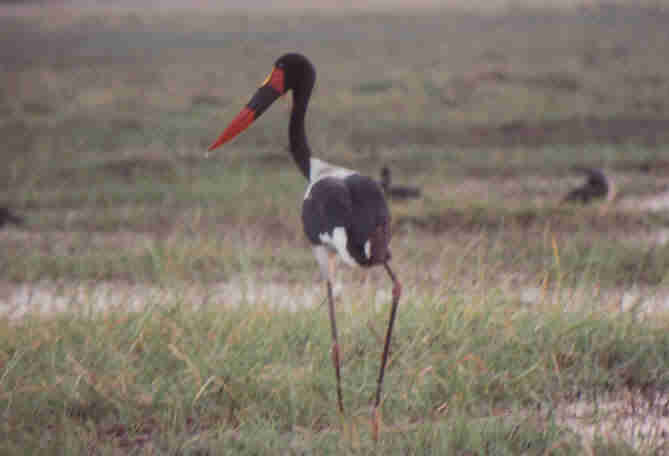Saddlebilled Stork - Ephippiorhynchus senegalensis
 The Saddlebilled stork is a common resident of the Chobe river. A large, strikingly coloured stork unlikely to be confused with any other; distinctive both at rest and in flight. Most frequent in the Chobe-Linyanti-Okavango region of Botswana.
The Saddlebilled stork is a common resident of the Chobe river. A large, strikingly coloured stork unlikely to be confused with any other; distinctive both at rest and in flight. Most frequent in the Chobe-Linyanti-Okavango region of Botswana.
This stork is huge, black and white in colour, with an enormous red-and-black bill with a yellow saddle. The saddlebilled stork stands about 145cm tall with a wingspan of up to 270cm. Females are about 10% smaller than the males. They are usually found alone or in pairs and enjoy floodplains and waterways. It is in this watery environment that they catch fish (up to 500 grams), frogs, small birds and crustaceans.
Their breeding season is between January and July, during which the female lays 2 - 3 eggs weighing about 146g each. The incubation period is 30 - 35 days with the chicks staying in the nest for about 70 - 100 days. The Saddlebilled Stork's status is rare and it is listed on the Red Data List of Birds.







